Hanna Harris, December 2022
At the beginning of November, representatives from a number of cities gathered in Valencia, Spain, for the global Design Policy Conference and the World Design Capital alumni meeting. Many of the speeches heard during the conference underlined the important role that design plays in improving urban living.
“What we need are human-scale services – and this is where design plays a crucial role,” demanded the French Colombian urban planner Carlos Moreno, who is known for his 15-minute city concept, in his keynote speech.
The notion was also supported by World Design Organization (WDO) President-Elect David Kusuma: “Inclusive, safe, resilient and sustainable urban living needs design more than ever to succeed.”
At the conference, the attending cities and design influencers discussed both the future trends of design policies and the ways in which the design cities have integrated their World Design Capital legacies into their everyday operations. Among these cities is Helsinki, which has a 10-year design journey behind it, the fruits of which the City intends to continue developing. Below are some highlights from along the journey, with a focus on the future.
The successful design journey started in the World Design Capital year 2012
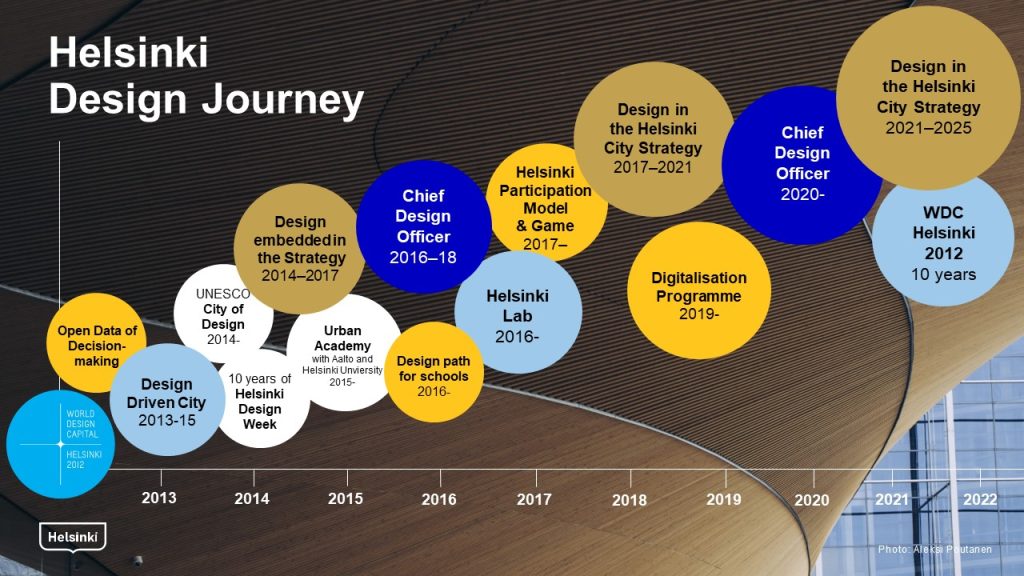
Design and architecture have long played an important role in the building of the Finnish welfare society and better daily life at both the national level and in Helsinki. That being said, the City of Helsinki’s actual design journey did not begin until 2012, when Helsinki was selected as the World Design Capital together with the cities of Espoo, Vantaa, Kauniainen and Lahti.
Encompassing hundreds of projects, events and activities, the World Design Capital year was a veritable cornucopia of design. After the celebrations, it came time to consider how the lessons learned could be integrated into the City’s operations in a more permanent manner.
For the City of Helsinki, the World Design Capital year served as an initial push for utilising design and design-based thinking in the development of the City’s own operations and services. As a result, design became a strategic-level focus area for the City.
From an event to a permanent part of City functions
Helsinki’s successful design journey has been contingent on a long-term commitment to the development of the City’s design activities. Because of this commitment, design plays an integral role in the City’s daily operation, strategic goals and ability to renew itself. To support it, it needs stories and visibility as well as cooperation and active dialogue with numerous partners.
Today, all of the City’s divisions utilise design in the customer-oriented development of their services.
In the last six years alone, the City’s design procurements have increased ninefold.
We have compiled examples of the ways in which Helsinki makes use of the design under the design stories section of the website. All of these stories illustrate how design has helped us focus on Helsinki’s residents: after all, the best city is built together with its users. Design also helps to identify challenges requiring multidisciplinary expertise: this makes design a vital partner in phenomenon management.
City-level structures and tools increase the effectiveness of design
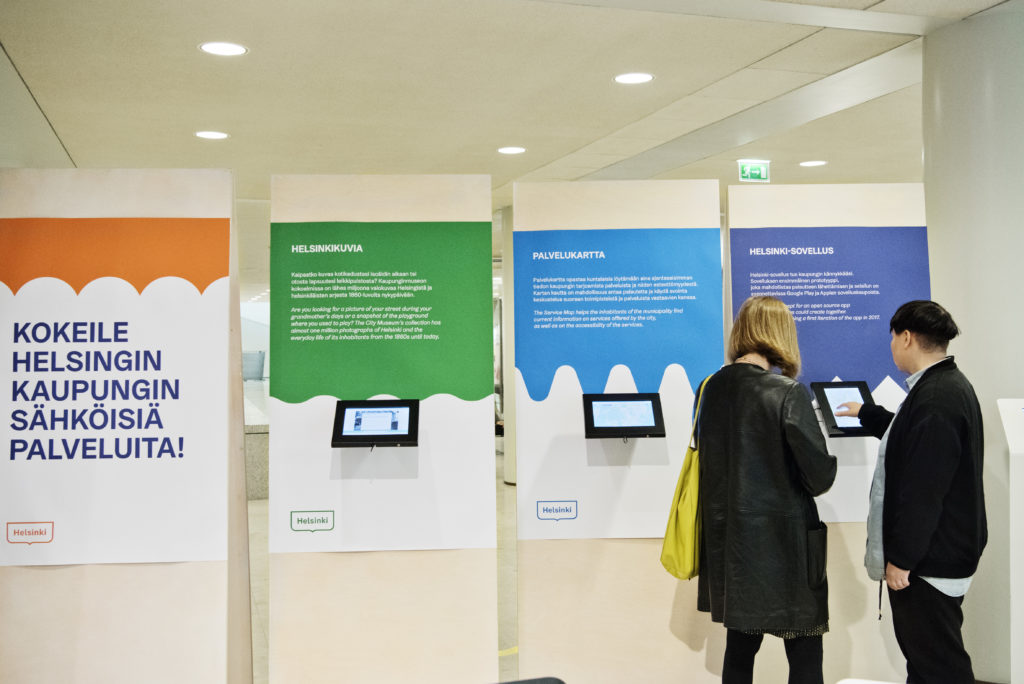
Individual projects need city-level structures and tools to support them.
Immediately after the World Design Capital year, Helsinki launched the three-year Functional City project to cement the legacy of the design year. This was when the City hired its first designers.
By 2016, the team had grown and developed into the City’s internal design development team, Helsinki Lab, which works together with the City divisions’ own teams of developers and a constantly growing network of City employees who utilise design in their own work. This is also when the City established the new position of Chief Design Officer. Even today, we continue to assess how the City’s structures should be developed in order to achieve the most effective results.
In future, we will also seek to develop ways of sharing the lessons learned in the City’s design work both internally within the entire City organisation and with other partners. To help us achieve this, we have a great network of design partners.
Helsinki has been one of the first cities to establish a framework agreement on design.
In fact, the City’s new framework agreement on service design entered into force just this autumn. With this new agreement, our aim is to respond to the experiences of previous years and the new needs identified as a result of feedback discussions while strengthening our design procurement skills. Another important challenge for the future is to develop the assessment of effectiveness and the utilisation of data generated in design work.
The City Strategy provides strong support
One of the key factors behind the success of Helsinki’s design journey and development of its operative design activities has been the fact that the value and essential role of design has been recognised in the City Strategy.
Helsinki utilises design in service development and the piloting of a more customer-oriented City organisation. This has been recognised in each City Strategy since the World Design Capital year 2012.
During this strategy term, our objective is to make design a more systematic part of user-oriented service renewal and the improvement of the City organisation’s productivity.
We want design to be utilised in both city-wide projects and foresight.
The ongoing transformation of the City’s hel.fi website and the extensive service design work being carried out as part of it are an excellent example of this: multidisciplinary development working as a driver of customer-oriented and inclusive development. This approach also provides us with valuable information on the development of different thematic service portfolios.
Now at the end of the design year, we also have the pleasure of announcing that the skilled designers behind the hel.fi transformation project will continue their work as part of the City’s design team after the end of the project. This will help us ensure continuity and the continued application of the lessons learned.
Focusing on the design of public urban spaces
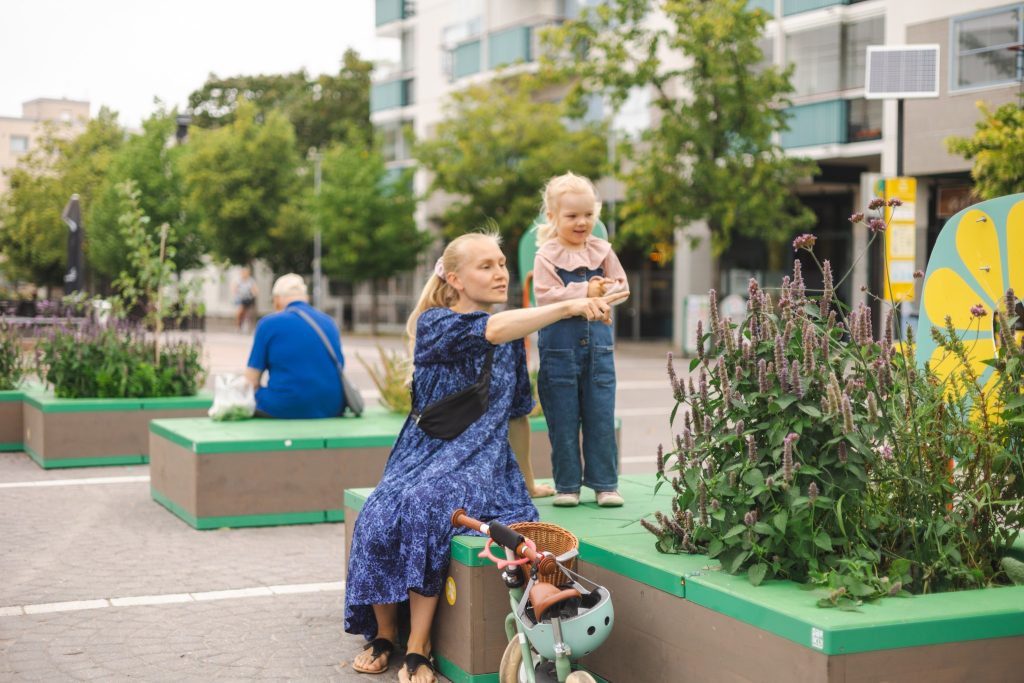
We have also strived to stay aware of where we could utilise design thinking to respond to future challenges and what kind of new approaches it requires of us.
One such area is the development of public urban spaces and the improvement of the resident experience. Our goal is to increase the attractiveness of public urban spaces by means of insightful design and experimentation.
To this end we have launched a placemaking programme focusing on the co-creation of pleasant urban spaces. The first pilot projects, which included placemaking experiments in the market and park areas of Helsinki’s suburban regeneration areas and the publication of a guide on how to create shared block courtyards, were carried out in 2022.
In 2023, the programme will continue with the completion of the plans for the computer-themed Ruoholahti Playground, which will be created in collaboration with Linda Liukas.
What these new projects have in common is the strategic objective of recognising the role that design and architecture play in wellbeing, the creation of a better resident experience and the City’s brand.
Notable milestones in the promotion of this objective next year will include the completion of Helsinki’s architecture policy programme and the next steps in the design and planning of the new museum of architecture and design.
Design to become more visible in events and communications
We want to continue strengthening Helsinki’s profile as a design city while engaging in active partnerships with other cities as well as companies and higher education institutions specialising in design.
During the 10th anniversary year of Helsinki’s journey as a design city, we have also renewed the ways in which we communicate about design – one example being this website, design.hel.fi, which details our design activities and the lessons learned from them – and told numerous international media about Helsinki as a design city. Over the course of the year, we carried out a dozen or so media trips and published numerous articles.
Following two years of COVID-19, events focused on design have also begun to be actively organised once again.
The 2022 design autumn got off to an early start in late August with the international B2B event Design Helsinki. Its London-based organisers were already known for having held a number of B2B design events in London and several Asian cities. The lively event attracted more than 85 companies from 10 different countries.
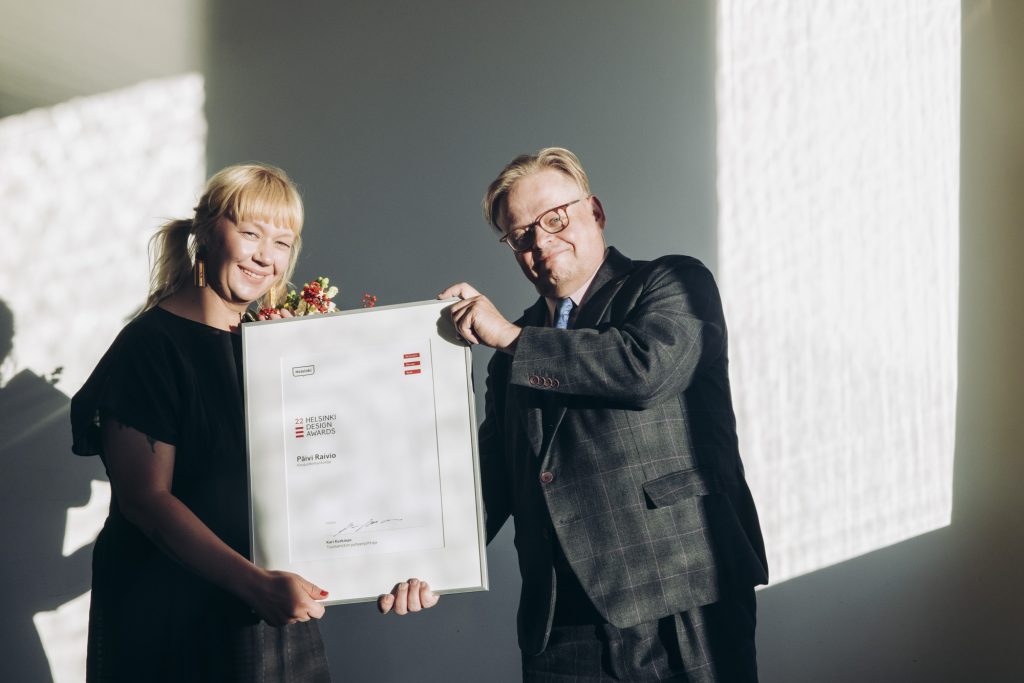
Expectations regarding the domestic flagship events of the design autumn were especially high this year. Furniture, design and decoration event Habitare returned following a two-year COVID break, while Helsinki Design Week, the largest design event in the Nordics, delighted participants by using as its main venue “The Sugar Cube,” the iconic building originally designed by Alvar Aalto as the headquarters of Enso-Gutzeit, marking the first time that the building has opened its doors to the public. The City of Helsinki has been engaging in strategic cooperation with Helsinki Design Week since the World Design Capital year. This year, we were delighted to award the Helsinki Design Award to designer of better public spaces and community activist Päivi Raivio.
As part of Helsinki Design Week, we also held a celebratory seminar on urban design featuring keynotes by Indy Johar and Linda Liukas. Lessons learned from the past and views on the future were shared at the event not only by Helsinki, but other design cities and industry professionals as well.
Lessons learned are shared on cities’ design networks
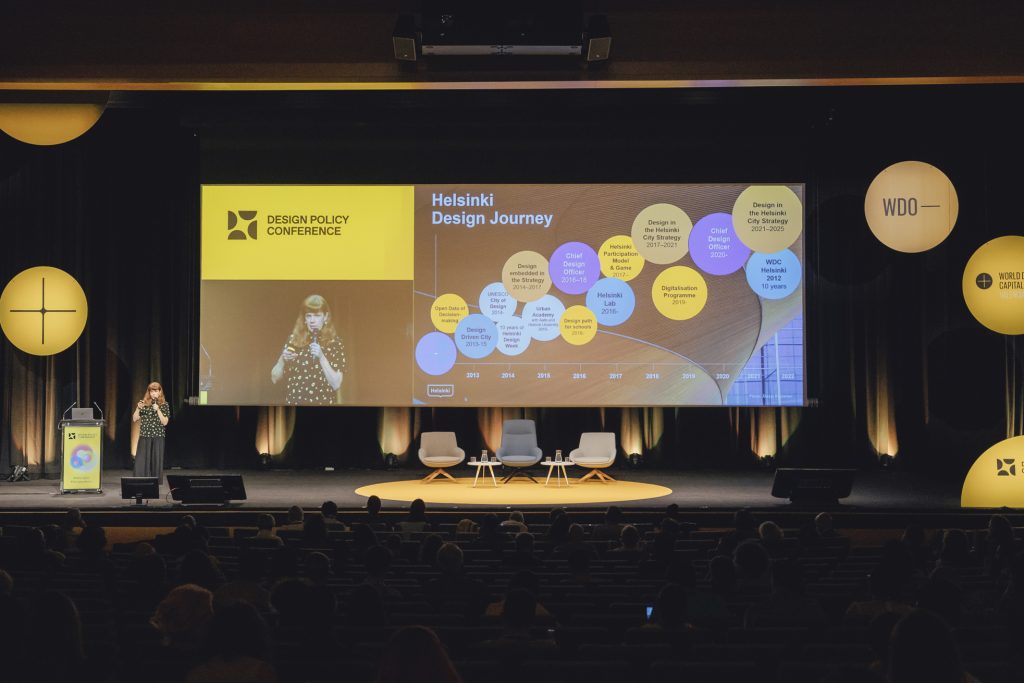
Helsinki has also been engaging in active dialogue with other cities and events throughout the autumn. Here are a few highlights:
At the end of September, we took part in Placemaking Week Europe. Earlier this year, Helsinki joined the Placemaking Europe network and is now a partner in the network’s knowledge exchange programme aimed at cities.
In October, we participated in the annual meeting of the global UNESCO Design Cities network in Kaunas, Lithuania. Helsinki joined the network soon after the World Design Capital year, in 2014.
During the autumn, we also visited the Oslo Architecture Triennale to participate in discussion about city administration and wide-ranging cooperation centred around the theme of neighbourhood.
The year ended with the visit to this year’s World Design Capital, Valencia.
Over the next few years, our ongoing design journey will include seminars and training courses focusing on e.g. strategic design and future design for the City’s own, growing design network. We will also be aiming to increase dialogue with our design office partners. A preview of this was offered by the partners’ day held in October this year, where the partners of our new framework agreement on service design met with various City operators.
Our goal is to ensure that design will continue to be one of the aspects that sets Helsinki apart internationally and a key tool for developing the city.
Based on the lessons that we have learned over the course of our ten-year design journey, we strongly believe that it is worth it.
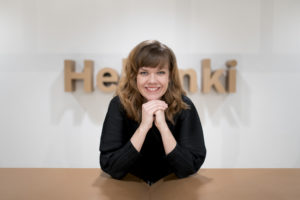 |
Hanna Harris has been the chief design officer of the City of Helsinki since 2020. In her role as the chief design officer, Hanna Harris promotes the utilisation of design and architecture in the development of the city’s functions and urban space as well as strengthens Helsinki’s reputation as an internationally prestigious design city. The City of Helsinki is one of the few cities in the world to have its own chief design officer. |
Bilder: Jussi Hellsten, Susa Junnola, RaivioBumann/ Vesa Laitinen, BravaEstudio, Helsinki Design Week, Sakari Röyskö

